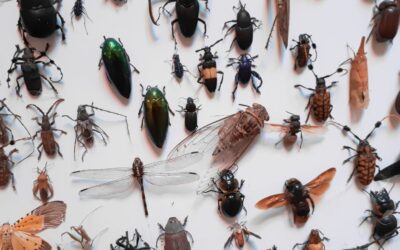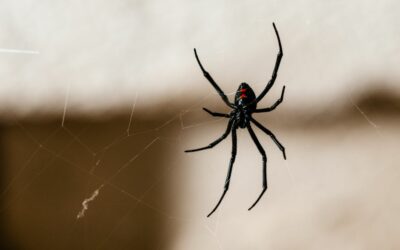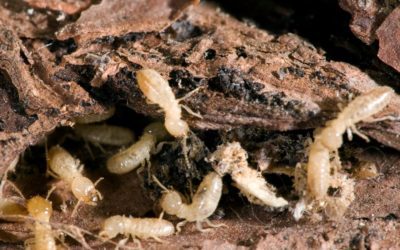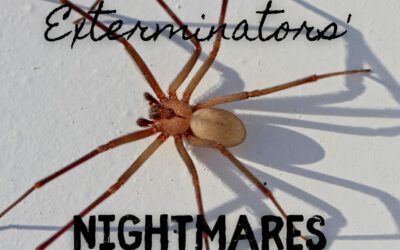
Arizona is home to roughly 300 different types of ants. That’s a lot of species to keep up with! However, only a few ants are worth being familiar with as an Arizona homeowner. These are the ants that often invade buildings and nest near human activity.
In this blog, JB’s Pest Control walks you through the Arizona ant species you should know. Continue reading to discover what makes each type of ant unique and how to tell them apart from others.
6 Types of Ants in Arizona
The first step to controlling Arizona ants is identification. Often, different types of ants look like one another and can be easily misidentified. The following sections will help you determine which ant species you may be dealing with at home. For further confirmation and control, the skill of a professional pest control company is almost always required.
To identify an ant among other insects and pests, it’s essential to know all ants have-
- Six legs, three on each side of their bodies
- A set of antennae
- Three main segments of their bodies- head, thorax, and abdomen
1 | Fire Ants
The southern and desert fire ants are Arizona’s two most common fire ants. These two to six-millimeter ants are dark reddish-brown, with some members appearing almost black.
Where do fire ants nest?
Fire ants build their mounds in various environments but typically prefer sunny locations, like parks, playgrounds, meadows, pastures, lawns, and wilderness areas. Their nests can become massive, some reaching three feet or more in height.
Fire ants also nest underground beneath rocks and branches. They can make their way indoors but typically do not nest permanently. Instead, they are foraging for food to bring back to their colony. The fire ant colony can have as many as 250,000 worker ants.
What do fire ants eat?
These pesky ants have an omnivorous diet, meaning they eat plants and animals. Below are some of their main sources of nutrition:
- Insects
- Earthworms
- Ticks
- Spiders
- Honeydew
- Seeds
- Greasy and sweet substances
Dead animals and insects are also consumed by fire ants, making them a contamination threat if the ants make their way into your pantry foods at home.
What else should you know about fire ants?
Not only are these pests invasive, but fire ants are highly active and aggressive. When disturbed, they often sting repeatedly, leaving painful red welts that turn into blisters. The sting can be treated but will also dissipate when left alone.
Be careful not to scratch an itchy fire ant welt. They can easily burst and become infected, leading to further complications and health risks.

2 | Pavement Ants
These unique types of ants are relatively small with dark brown to black bodies. Their legs are usually lighter in color. Pavement ants are about 1/8 inch on average. Furthermore, the pavement ant has a stinger on the end of its abdomen. However, it is rarely used to defend itself and more often aids in trailing pheromones.
Where do pavement ants nest?
This ant species gets its name from its common nesting locations on pavement, sidewalk cracks, and along curbs. The pavement ant will also nest under rocks, mulch, and logs. When they enter inside, the ants may be in walls, under the floors, and in insulation, making them difficult to locate.
What do pavement ants eat?
Pavement ants are excellent foragers and will consume just about anything. Some of their primary nutrition sources include:
- Insects
- Seeds and nuts
- Honeydew
- Honey
- Bread
- Meats and cheeses
They also eat dead insects, animal carcasses, and organic waste. Because of their diet, they are often regarded as beneficial insects, cleaning up the unwanted materials in the environment.
What else should you know about pavement ants?
Pavement ants are not typically aggressive but will sting if provoked. In general, they would rather go about their business. Outdoors, these ants are often not an issue. However, they can become a problem when they invade buildings in search of food.
3 | Crazy Ants
Crazy ants are smaller than other types of ants and vary in color. Depending on the species, they may be dark brown, black, or reddish. Crazy ants are often identified by their exceptionally long legs and antennae.
Where do crazy ants nest?
Most crazy ants prefer tropical conditions that are warm and humid. However, they are also found in dry climates, like in Arizona. These ants nest under rocks and other piles of debris, like wood or leaves. Crazy ants do not build ant mounds like other types of ants. Their colonies can have millions of members.
You may also spot crazy ants near electrical wires and equipment. They will even short circuits and cause issues with an electrical system.
What do crazy ants eat?
Crazy ants have a generalist diet, consuming various types of foods:
- Live and dead insects and small animals
- Honeydew
- Fruits
- Seeds
- Sap
- Household food crumbs
What else should you know about crazy ants?
Crazy ants are an invasive ant species relatively new to the area. Because of their massive colonies and atypical behaviors, they are challenging to track and eliminate, especially indoors. When they nest in a particular area, they will quickly out-compete native ant species.
4 | Carpenter Ants
Carpenter ants are typically dark red or black. They are larger than other types of ants, averaging about 13 mm long.
Where do carpenter ants nest?
These ants get their name from their typical nesting sites inside rotting or dry wood structures. They do not eat the wood as termites do. However, they do create tunnels and other damage while building their nest. Carpenter ants are frequently misidentified as termites because of this behavior. But they don’t cause nearly as much damage as termites.
What do carpenter ants eat?
Carpenter ants consume various sources of nutrition, like:
- Live and dead insects
- Sweets
- Meats and cheeses
They occasionally invade homes in search of food crumbs but often remain outdoors.
What else should you know about carpenter ants?
Carpenter ants aren’t always a threat. However, their nests and colonies can become quite large and weaken a building or other structure. They will also defensively bite if they are disturbed.
5 | Odorous House Ants
The odorous house ant is a tiny black or dark brown ant, about 1/16 to 1/8 inches long.
Where do odorous house ants nest?
Odorous house ants sometimes have more than one nest. In the winter, they typically remain in one location. But when the summer rolls around and food is plentiful, they disperse into multiple nesting sites spread over their territory.
They often enter indoors searching for sweet foods, like sugary crumbs and syrups. Odorous house ants are small and can easily make their way into packed pantry foods, leading to contamination. So, you certainly want to get rid of them if you find them inside your home. However, they do not bite or sting.
What do odorous house ants eat?
Odorous house ants like to eat sugary household foods and other sources of nutrition, like:
- Insects
- Honeydew
- Nectar from flowers
What else should you know about odorous house ants?
Odorous house ants are known by several different common names, like the sugar ant, stink ant, or coconut ant. They are named for their fondness for sweet substances and unpleasant scent when crushed. If you squash one of these little black ants, you will smell a distinct odor people relate to rotten coconut, blue cheese, or strong pine.

6 | Argentine Ant
Argentine ants are about 1/8 inches long and have light to dark brown bodies. Their colonies can have many queens and can grow to massive sizes.
Where do Argentine ants nest?
Argentine ants will nest in all kinds of locations, including in moist soil, beneath floorboards, under buildings, and along sidewalks. Their nests have extensive tunnels that can stretch miles under the surface. In fact, scientists discovered an Argentine ant nest that reached 4,000 miles underground!
What do Argentine ants eat?
This ant species consumes various food sources. They are particularly fond of sweets, like honeydew, but will also eat:
- Greasy and sugary household foods
- Organic waste
- Dead and alive insects and animals
What else should you know about Argentine ants?
These pests are invasive, often eliminating native ants in their area. Argentine ants are known for traveling in distinctive trails, which is how most people identify them. However, other ant species have the same behavior.
Need Ant Control and Elimination?
JB’s Pest Control is Phoenix’s local pest expert. We have a team full of professionals that know exactly how to handle pests of all kinds, including pesky ants.
Give us a call today to find out how we can control and eliminate the ants on your Arizona property with our effective and conscious pest solutions.




